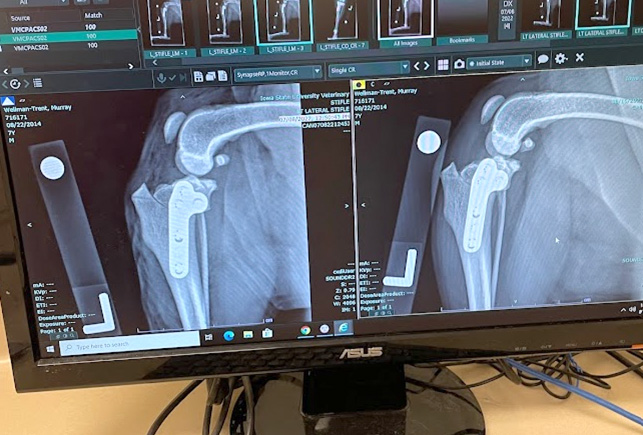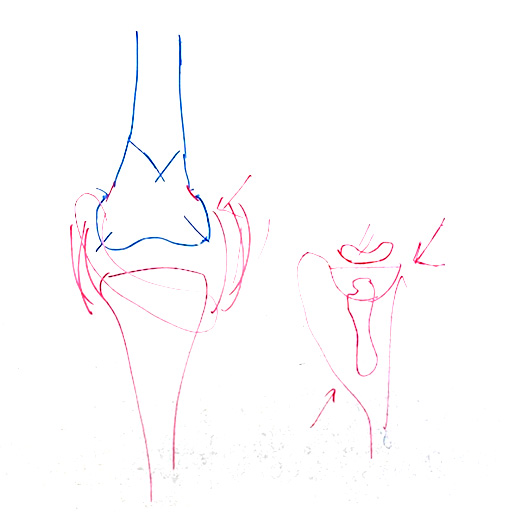


Trent Wellman knew the level of care his dog Murray would receive when he brought the nine-year-old King Charles Cavalier Spaniel to the Hixson-Lied Small Animal Hospital.
He should know all about the hospital since he fundraises for the College of Veterinary Medicine.
But even Wellman noted his appreciation for Dr. Stokes’ approach.
“When Dr. Stokes (attending veterinarian) was talking through the procedure, you could see that she was explaining it in a way I could understand,” Wellman said. “She also laid out all of the options for Murray’s care.”
Murray was brought to the small animal hospital with what Wellman described as a “hitch in his giddy-up.” Stokes diagnosed the dog’s limp as a torn CCL (canine cruciate ligament). Dogs can suffer from different degrees of rupture with this ligament.
In Murray’s case, Wellman noticed he was favoring his back left leg. Within a week, he was struggling to jump up onto the family couch.
Stokes went through Murray’s case with the Wellmans, even drawing out the injury on a whiteboard. She gave the family three options ranging from weight care and medication to surgery. Essentially laying a spectrum of care.
The concept of “spectrum of care” has arisen in recent years to refer to an array of treatment options that recognizes the diverse needs of clients and their pets. The continuum ranges from basic, affordable and often non-invasive, low-tech care to advanced and usually more costly and invasive care.
For the Wellman’s this decision was easy, as they had previously secured pet insurance which would cover 90% of the what procedure they chose.
“For sure, we were going to do the surgery,” he said, “and after a few days of recovery, he was walking and making significant progress.”
Choosing to purchase the pet insurance proved even more pivotal when three months later, Murray began experiencing the same issue with his other back leg.
“There’s no doubt we would have done the first surgery, regardless if we would have had pet insurance or not,” Wellman said. “The second surgery would have been a little more challenging.”
Murray and the Wellman’s are grateful for the care he received from Drs. Stokes and Telek, and fortunate to have the ability to cover the investment. “If Murray wouldn’t have had this surgery, I’m not sure his quality of life would be what it is now after the surgeries.”
